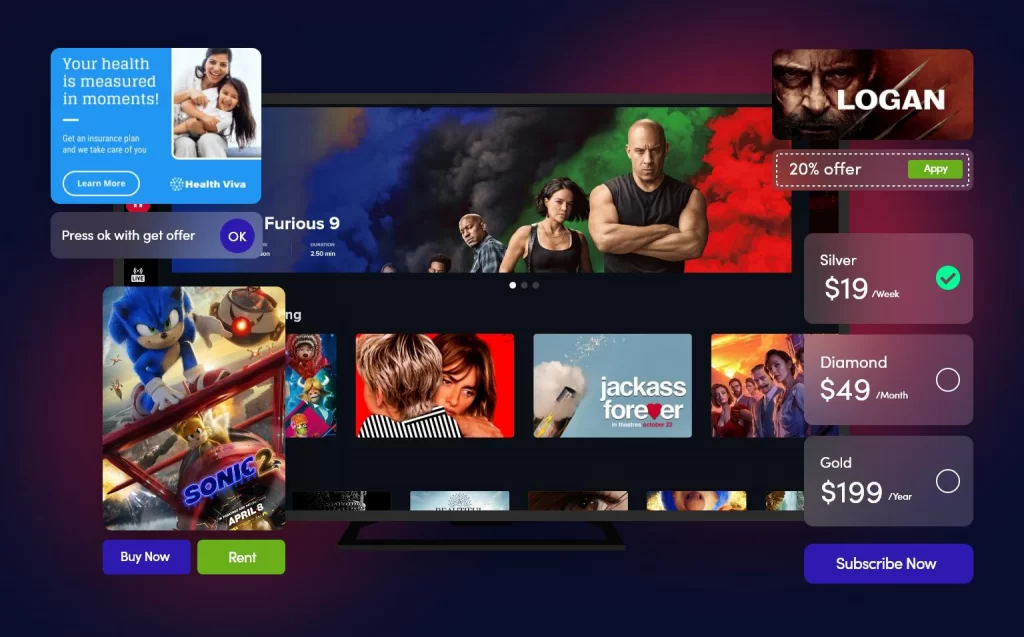The 3-Minute Rule for Apollo Group Tv
The 3-Minute Rule for Apollo Group Tv
Blog Article
Fascination About Apollo Group Tv
Table of ContentsExamine This Report on Apollo Group TvOur Apollo Group Tv PDFsThe Apollo Group Tv Statements7 Simple Techniques For Apollo Group Tv
In this situation, instead of having three-minute industrial areas throughout a 30-minute television program, TV programming might transform to one where a customer will certainly be called for to have a regular monthly subscription, so that they cen sight targeted banner ads. This type of marketing currently happens online, and the quantity of information tv firms collect permits them to do much the exact same.Explain the major trends amongst the broadcasting and cord networks. Popular radio shows such as cops drama Dragnet and western cowboy series Gunsmoke were adjusted for tv, and brand-new TV shows were sponsored by single advertisers, just as radio shows had been.
Today, the tv market is even more complicated. Programs are funded by several advertisers; programming is controlled by significant media corporations; and the 3 major networks no more dominate the airwaves however instead share their viewers with numerous cord channels. Numerous variables represent these trends within the sector, including technological advancements, government laws, and the development of new networks.

Some Of Apollo Group Tv
Established in 1969, (PBS) established out of a report by the Carnegie Commission on Educational Tv, which checked out the duty of academic, noncommercial television on culture. Public tv was likewise planned to offer global accessibility to tv for viewers in country locations or customers who can not pay for to pay for exclusive tv solutions.
The duration in between 1950 and 1970 is traditionally recognized as the. Besides a little portion of airtime controlled by public television, the three significant networks (recognized as the Big 3) dominated the tv sector, collectively making up greater than 95 percent of prime-time watching. In 1986, Rupert Murdoch, the head of multinational business News Corp, released the Fox network, testing the supremacy of the Big 3.
Targeting young and minority audiences with shows such as Buffy the Vampire Slayer, Moesha, Dawson's Creek, and The Wayans Bros., the new networks wished to draw terminals away from their old network affiliations. Nevertheless, rather than repeating the success of Fox, UPN and WB struggled to make an impact. Unable to draw in numerous affiliate stations, both fledgling networks got to fewer houses than their bigger competitors since they were impossible in some smaller sized cities.
This decision led the means for the growth of cable film networks, adding to the exponential development of wire in the 1980s and 1990s. apollo group tv app. Additional deregulation of cable in the 1984 Cord Communications Plan Act removed constraints on wire rates, making it possible for drivers to charge what they wanted for cord solutions as long as there worked competitors to the service (a criterion that over 90 percent of all wire markets might meet)
The Of Apollo Group Tv

Having produced the initial "superstation," Turner increased his realm by establishing 24-hour information network CNN in 1980. At the end of the year, 28 nationwide programs services were readily available, and the cable television change had started. Over the next years, the sector undertook a duration of rapid development and popularity, and by 1994 customers might choose from 94 basic and 20 costs wire services.
Number 9 - https://allmyfaves.com/apollogtv01?tab=Apollo%20Group%20TV.16 Boosted competitors from cable networks has actually triggered a stable decline in the networks' audience scores. Throughout the 1950s, the expense of generating a solitary tv program raised as programs came to be longer and manufacturing costs soared. Sponsorship on network television shifted from solitary sponsorship, in which a program was entirely sustained and produced by one marketer, to numerous sponsorship, in which marketers acquired 1- or 2-minute spots on the program
Each reaction should be a minimum of one paragraph. Select among the Big 4 networks and print out its weekly programs timetable. Watch the network's prime-time programs throughout a week, keeping in mind the target demographic for each show. Observe the advertising and marketing enrollers that sustain each show and contrast just how the services and products fit with the designated audience.
Not known Facts About Apollo Group Tv

Linear TV, frequently described as typical broadcast TV, includes cord and satellite television. It's called "straight" because material follows a predetermined programs routine, unlike on-demand content check these guys out which the individual customer decides to see based on their very own preferences and schedule. So, when you ask, "What is linear television?", consider it as the classic way of enjoying TV that has been around for decades.
Report this page